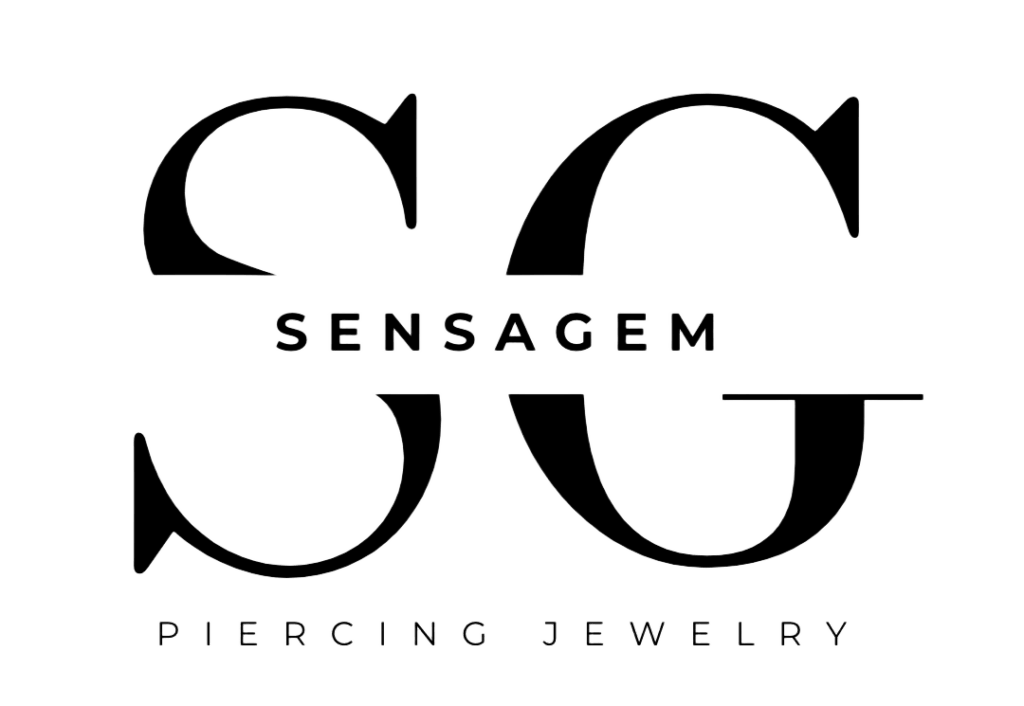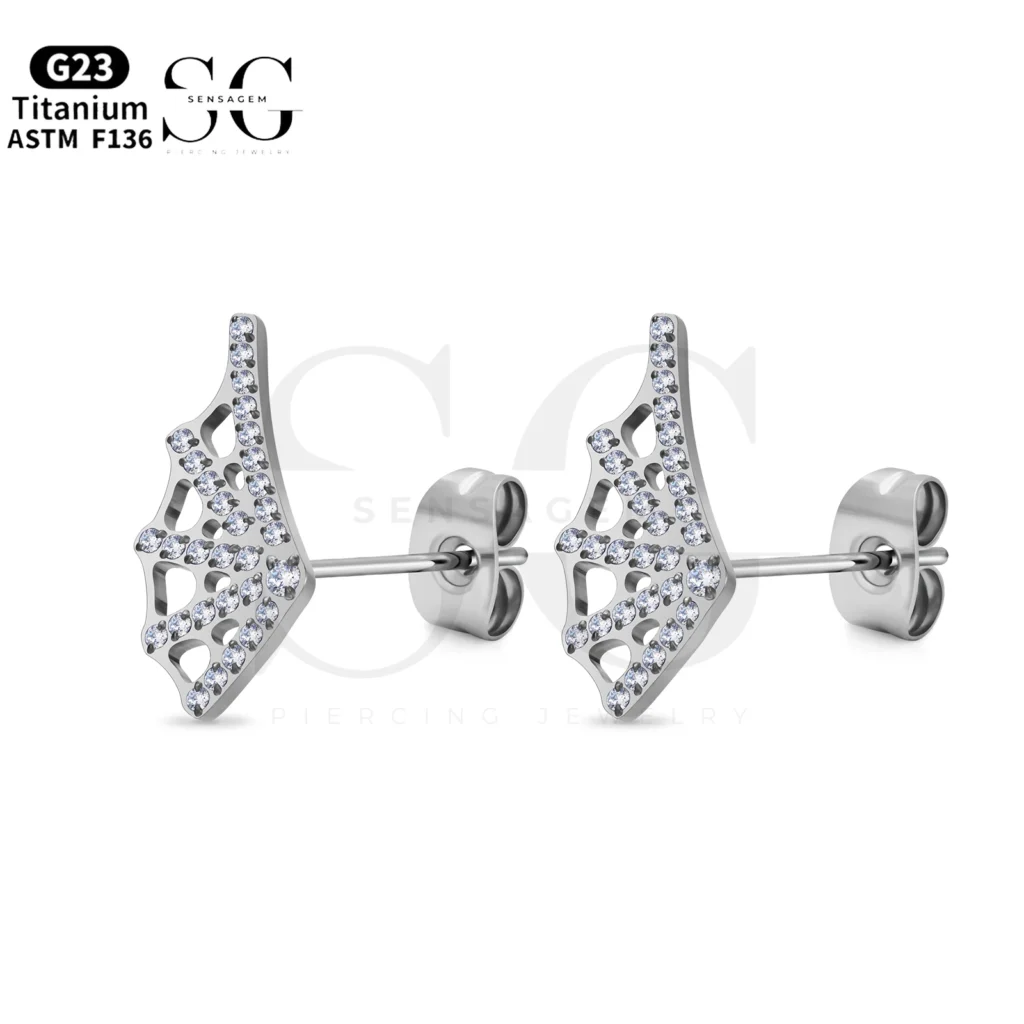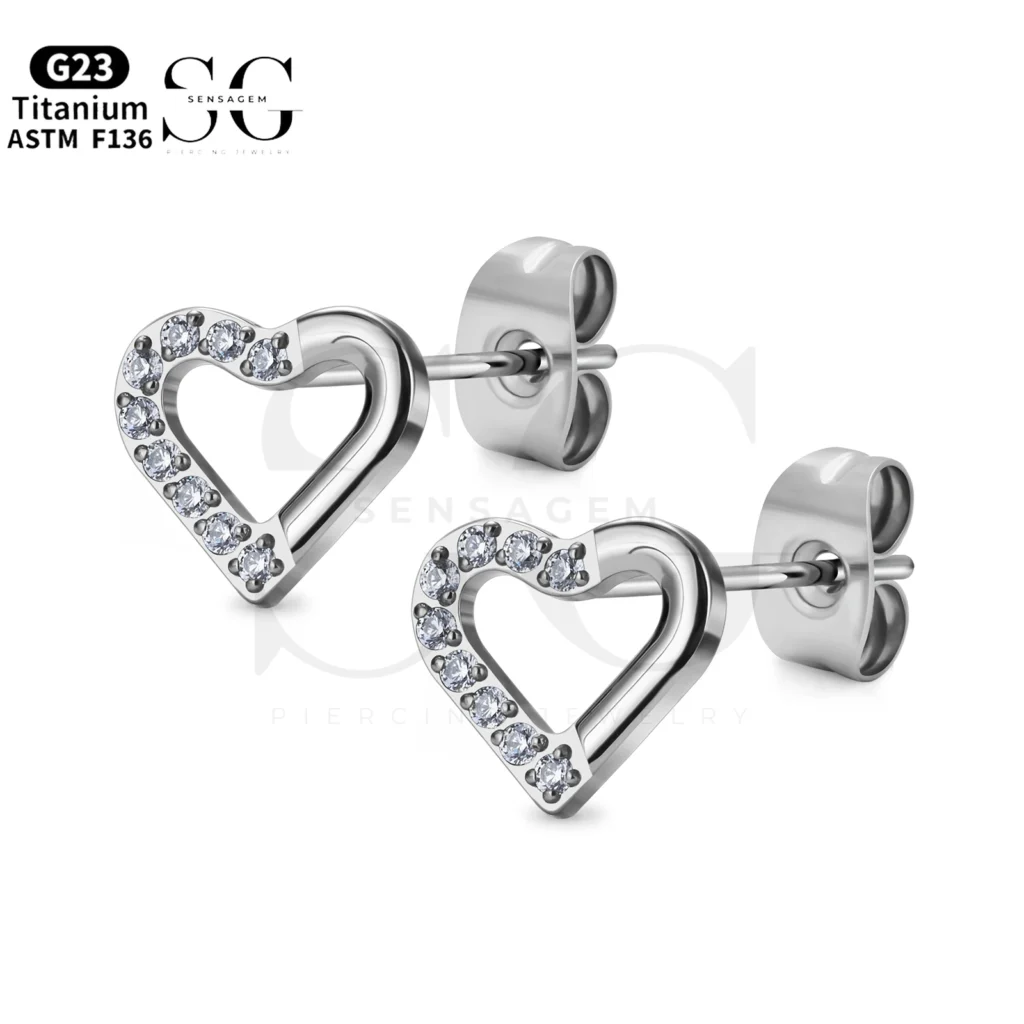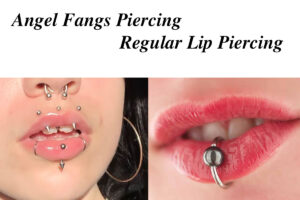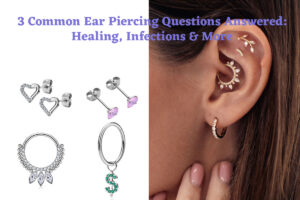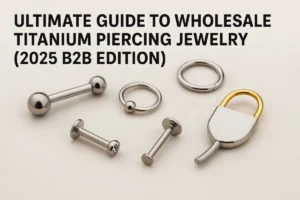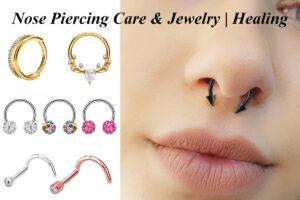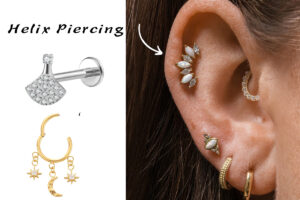1. Introduksjon: The Rising Popularity of Ear Piercings
Ear piercings have long been a favored form of body decoration, adding a personal touch and an element of style to one’s appearance. With the advent of modern fashion, ear piercings have become a statement of individuality, and more people are opting for them to express their unique personalities. I dag, there are various types of ear piercings to choose from, including lobe, Helix, tragus, and conch piercings, each offering different ways to accessorize with jewelry.
But with the increasing popularity of ear piercings, many people still have questions regarding the process, helbredende tid, potential complications, and how to take proper care of their new piercings. If you’re considering getting an ear piercing or recently had one, you may be wondering, “How long does an ear piercing take to heal?” or “What does an ear piercing infection look like?” These questions are quite common among individuals who are new to the world of piercings, and it’s important to have the right knowledge before and after getting your ear pierced.
I denne artikkelen, we’ll answer some of the most frequently asked questions, such as what to expect after ear piercing, the healing process, how to treat an ear piercing infection, and other important aspects of ear piercing care. By understanding the basics of ear piercings and how to care for them, you can ensure a smooth healing process and enjoy your new accessory without unnecessary complications.
2. Ear Piercing Healing Time and Aftercare
One of the most frequently asked questions when it comes to ear piercings is, “How long does ear piercing take to heal?” The healing time for ear piercings can vary depending on the type of piercing, individual healing rates, and how well the piercing is cared for during the healing process.
How Long Does an Ear Piercing Take to Heal?
Generally, ear piercings take anywhere from 6 til 8 Uker å helbrede. Imidlertid, the healing time may be longer for cartilage piercings, such as helix or tragus piercings, which can take 3 til 6 months to heal properly. Lobe piercings, on the other hand, typically heal faster. The healing duration can also vary based on factors such as age, health, and whether the piercing is properly cared for.
What to Expect During the Healing Process
During the first few days after getting an ear piercing, you may experience some discomfort, mild swelling, and redness around the piercing site. This is completely normal and part of the body’s natural healing response. As the days go by, you should start noticing the swelling go down and the area becoming less sensitive.
It’s important to remember that during the healing period, the piercing site will be sensitive and prone to irritation. This means you should avoid touching or rotating the piercing with dirty hands and refrain from sleeping on the side of the piercing. You should also keep the piercing away from excessive moisture, as this could lead to infections.
How to Heal Ear Piercing Fast
To help speed up the healing process, follow these essential tips:
Clean the piercing regularly: Use a saline solution or a mild, non-alcoholic disinfectant to clean the piercing at least twice a day.
Avoid touching the piercing with dirty hands: Always wash your hands thoroughly before touching your piercing to prevent bacteria from entering the piercing site.
Keep the area dry: After cleaning, make sure the piercing is completely dry before putting on any jewelry or exposing it to moisture.
Avoid swimming in pools or hot tubs: For the first few months after getting an ear piercing, avoid submerging your ear in pools, lakes, or hot tubs, as they can introduce bacteria into the piercing.
Be cautious with hair products: Try to avoid applying hair sprays, gels, or oils near the piercing, as these can irritate the area.
By following these simple aftercare instructions, you can significantly reduce the risk of infection and help your ear piercing heal faster. If you notice any unusual signs such as persistent redness, increased pain, or discharge, be sure to consult with a professional piercer or healthcare provider for advice.
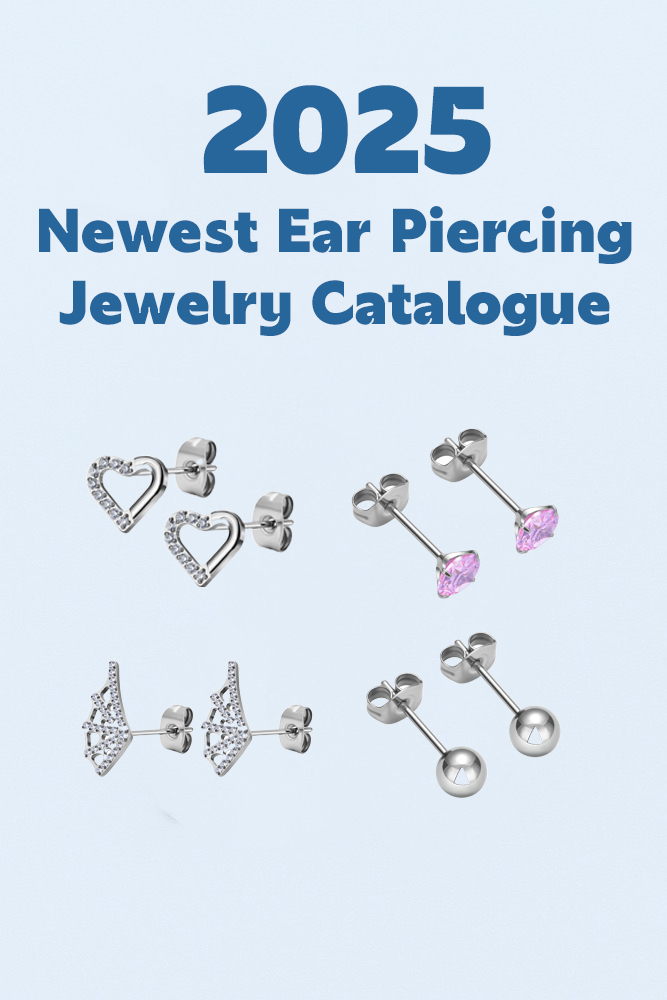
Get 2025 Best Selling Ear Piercing Jewelry Catalogue
Discover Our 2025 Collection of Ear Piercing Jewelry, Crafted from High-Quality Titanium Alloy and 316L Stainless Steel. Featuring Exquisite Designs and 5A Grade Zircon Gems – Shop Now and Elevate Your Piercing Collection!
3. How to Treat an Ear Piercing Infection
An ear piercing infection is one of the most common complications that can arise during the healing process. While infections are rare with proper care, they can occur due to poor hygiene, touching the piercing with unclean hands, or irritation caused by the jewelry. If you’re wondering “How to treat ear piercing infection” or “How to treat infected ear piercing,” it’s important to act quickly and know what to do.
What Does an Ear Piercing Infection Look Like?
Infected ear piercings can exhibit several noticeable symptoms, inkludert:
Redness and warmth around the piercing site.
Swelling that doesn’t go down after a few days.
Pus or discharge that may be yellow or green, indicating infection.
Pain or tenderness that increases over time.
A bad smell coming from the piercing.
If you notice any of these symptoms, it’s essential to take immediate action to treat the infection before it worsens.
How to Treat Infected Ear Piercing
Clean the piercing: Use a saline solution or an antiseptic solution recommended by a professional piercer to clean the infected area. Do not use harsh alcohol or hydrogen peroxide, as these can dry out the piercing and delay the healing process.
Avoid removing the jewelry: If the infection is mild, do not remove the jewelry, as doing so may cause the hole to close around the infection, trapping bacteria inside. Imidlertid, if the infection is severe and the piercing becomes painful or extremely swollen, it’s crucial to remove the jewelry and consult a doctor.
Apply warm compresses: To help reduce swelling and soothe the area, gently apply a warm, moist compress to the infected piercing several times a day.
Seek medical attention if necessary: If the infection persists or worsens, or if you notice a keloid or excessive swelling, it’s essential to visit a doctor. They may prescribe an antibiotic ointment or oral antibiotics to help clear the infection.
How to Prevent Ear Piercing Infections
To prevent infections in the first place, here are some helpful tips:
Use high-quality jewelry: Make sure you’re using jewelry made from hypoallergenic materials such as titanium, Kirurgisk stål, eller niobium. These materials are less likely to cause allergic reactions or irritation.
Clean your piercing regularly: As mentioned earlier, use saline solution to clean the piercing site at least twice daily. This helps prevent bacteria from building up and reduces the risk of infection.
Avoid excessive touching or twisting: Only touch your piercing when necessary, and always wash your hands thoroughly before doing so.
Monitor the healing process: Keep an eye on the piercing for any signs of infection, especially during the first few weeks after the piercing. If you experience any discomfort, consult with your piercer or healthcare provider for guidance.
By following these guidelines and taking proper care of your ear piercing, you can prevent infections and ensure that your piercing heals as smoothly as possible. If you have any concerns about your piercing or if you’re unsure about any symptoms, don’t hesitate to consult with a professional piercer or a medical expert for advice.
4. Choosing and Changing Ear Piercing Jewelry
When it comes to ear piercings, choosing the right jewelry is crucial for both aesthetics and health. Not only does the jewelry need to complement your style, but it must also be made from materials that reduce the risk of infection and allergic reactions. With so many options available, it’s important to understand which materials are best suited for your ears and when it’s safe to change your jewelry.
Choosing the Right Jewelry for Your Ear Piercing
The material of your ear piercing jewelry plays a significant role in ensuring a safe and comfortable healing process. The most commonly recommended materials include Kirurgisk stål, Titan, niobium, og 14k or 18k gold. These materials are hypoallergenic, meaning they are less likely to cause an allergic reaction or irritation.
Kirurgisk stål: This is one of the most popular choices for ear piercing jewelry. It’s durable, rimelig, and widely available. Surgical steel is corrosion-resistant, making it a great option for people with sensitive skin.
Titan: Another excellent option, titanium is lightweight, sterk, and completely hypoallergenic. It’s ideal for those who are prone to allergies or irritation from other metals. It’s also more durable and corrosion-resistant than surgical steel, making it a top choice for long-term wear.
Niobium: This metal is highly resistant to corrosion and is a great alternative for those with nickel allergies. It’s less common than surgical steel or titanium but still a highly durable and safe option for ear piercings.
14k or 18k Gold: Gold is a stylish choice, and many people opt for gold jewelry once their piercings have healed. Imidlertid, it’s essential to ensure the gold is genuine (14k or 18k) to avoid reactions with lower-quality alloys.
When selecting your jewelry, it’s also important to consider the størrelse og måler. For standard ear lobe piercings, en 20 måler (0.8 mm) eller 18 måler (1.0 mm) is typically used, while cartilage piercings may require a slightly thicker gauge.
When Can I Change My Ear Piercing?
One of the most frequently asked questions by new piercing enthusiasts is, “When can I change my ear piercing?” The answer depends largely on the type of piercing, its healing progress, and how well you’ve been taking care of it.
Til lobe piercings, the healing time is typically around 6 til 8 uker, meaning you can change your jewelry once the piercing has fully healed. Imidlertid, Bruskpiercinger (such as helix or tragus piercings) generally require a longer healing time of 3 til 6 Måneder, and you should wait until the piercing is completely healed before changing the jewelry.
To determine whether it’s time to change your jewelry, you should look for signs that your piercing has fully healed:
No redness or swelling around the piercing site.
The area is not painful to the touch.
No discharge or crusting is present.
The piercing feels secure and doesn’t move around excessively.
Hvis du er usikker, it’s always safer to wait longer before changing your jewelry. Consulting with a professional piercer is also a great idea, especially if you’re uncertain about the healing progress.
How to Change My Ear Piercing Jewelry
Changing your ear piercing jewelry for the first time can be tricky if you’re unsure of the process. Hvis du lurer på, “How to change my ear piercing?”, here’s a step-by-step guide:
Wash your hands thoroughly before touching the piercing or jewelry. Clean hands are essential to avoid introducing bacteria into the piercing.
Clean your piercing with a saline solution or an antiseptic recommended by your piercer to ensure the area is free of bacteria.
Remove the old jewelry carefully. If the jewelry is stuck or difficult to remove, do not force it. Om nødvendig, apply a small amount of saline solution around the piercing to loosen any crust that may have formed.
Insert the new jewelry carefully. Be gentle and make sure the jewelry is going in straight. If you’re inserting a stud or ring, ensure it’s aligned properly and securely in place.
Clean around the piercing once the new jewelry is inserted. This helps reduce the risk of infection and keeps the piercing clean as it continues to heal.
Remember that while you can change your jewelry once the piercing is healed, it’s important to choose high-quality jewelry that suits your style and doesn’t cause irritation.
5. Common Questions and Misconceptions About Ear Piercings
Despite their popularity, ear piercings can come with a fair share of confusion and misconceptions. In this section, we’ll address some of the most common questions people have about ear piercings.
How Long Does Ear Piercing Heal?
One of the most frequently asked questions is, “How long does ear piercing heal?” As we mentioned earlier, ear lobe piercings typically take around 6 til 8 uker å helbrede fullt ut, while Bruskpiercinger may take 3 til 6 Måneder. The healing process can vary depending on several factors, including your overall health, how well you care for the piercing, and the type of jewelry used.
How to Know if Your Ear Piercing is Infected
It’s important to keep an eye on your piercing during the healing process to detect any potential infections early. Så, “How to know if your ear piercing is infected?”
Signs of infection can include:
Redness and warmth around the piercing site.
Smerte or throbbing that worsens over time.
Pus or discharge, especially yellow or green.
Swelling or hardness near the piercing.
If you notice these symptoms, it’s essential to clean the piercing regularly with saline solution, avoid touching it with unclean hands, and consult with a piercer or doctor if the symptoms persist.
Can Ear Piercing Close?
If you stop wearing jewelry in your ear piercing for an extended period, “Can ear piercing close?” The answer is yes. Mens lobe piercings can take a long time to close, Bruskpiercinger tend to close up more quickly. The exact amount of time it takes for a piercing to close depends on how long it’s been healed, but in general, the longer the piercing has been in place, the less likely it is to close completely.
If you want to prevent your ear piercing from closing, it’s essential to keep jewelry in it, even if you switch to a small, thin piece.
6. Konklusjon og anbefalinger
Ear piercings are a great way to express your individuality, but proper care is essential to ensure they heal well and remain infection-free. From choosing the right jewelry to understanding the healing process and how to treat an infected piercing, it’s important to follow the necessary steps to make the most of your new piercing.
Here are a few key recommendations for aftercare:
Clean your piercing regularly using saline solution.
Avoid touching the piercing with dirty hands.
Use high-quality jewelry to minimize irritation and avoid allergic reactions.
Be patient and allow the piercing to fully heal before changing jewelry.
If you have any doubts about the healing process, jewelry selection, or potential complications, don’t hesitate to reach out to a professional piercer or healthcare provider for advice. They can provide personalized guidance to ensure your ear piercing heals smoothly and safely.
Are you ready to get your ear pierced or need advice on your current piercing? Contact us today for expert piercing guidance and high-quality jewelry options that are perfect for your style and comfort!
